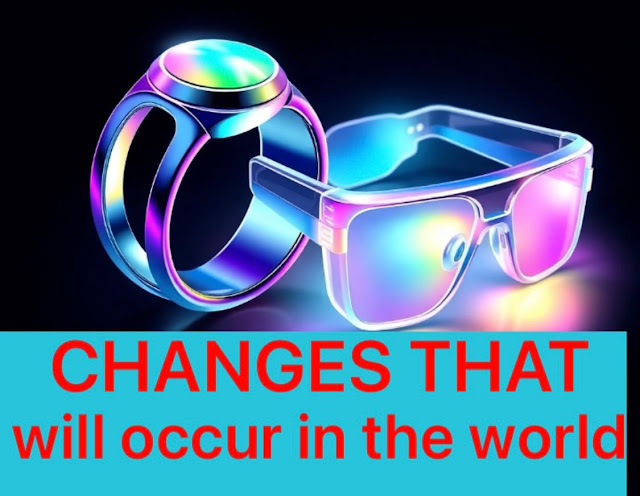In 2025, wearable technology has evolved remarkably, offering a diverse range of devices that seamlessly integrate into our daily lives. From health monitoring to augmented reality experiences, wearables have become indispensable tools. This article delves into the top wearable devices of 2025, comparing various types to help you understand their unique features and benefits.
1. Smartwatches: The All-in-One Wearable
Smartwatches continue to dominate the wearable market, serving as versatile companions that blend functionality with style. Leading brands like Apple, Samsung, and Garmin have introduced models that cater to diverse user needs.a
-
Apple Watch Series 11 : Building on its predecessors, the Series 11 offers enhanced health monitoring features, including blood pressure and glucose level tracking. Its integration with Apple's ecosystem ensures seamless connectivity and user experience.
-
Samsung Galaxy Watch Ultra 3 : Known for its robust design and advanced features, the Ultra 3 boasts improved battery life and comprehensive fitness tracking capabilities. Its compatibility with both Android and iOS platforms makes it a versatile choice.
-
Garmin Forerunner 265 : Tailored for athletes, this smartwatch provides detailed insights into running dynamics, VO2 max estimation, and recovery time suggestions, making it a favorite among fitness enthusiasts.
2. Smart Rings: Discreet and Functional
Smart rings have emerged as subtle yet powerful wearables, offering essential features without the bulk of traditional devices.
-
Oura Ring 4 : Leading the market, the Oura Ring 4 tracks sleep patterns, heart rate, and body temperature. Its sleek design ensures comfort, and its data analytics provide users with
actionable health insights.Samsung Galaxy Ring : Samsung's entry into the smart ring market offers features like temperature adjustment and sleep apnea detection, expanding the possibilities of health monitoring.
3. Augmented Reality (AR) Glasses: Merging Digital with Reality
AR glasses have transitioned from concept to reality, offering immersive experiences that blend the digital and physical worlds.
-
Rokid Glasses : Recognized for their discreet display and practical applications, Rokid Glasses provide users with real-time information overlays, enhancing productivity and entertainment experiences.
Samsung Galaxy AR Glasses : Anticipated to launch soon, these glasses are expected to integrate seamlessly with Samsung's ecosystem, offering AI-backed features and gesture controls for an intuitive user experience.
4. Fitness Trackers: Dedicated Health Monitors
For those focused solely on health metrics, fitness trackers offer specialized features without the additional functionalities of smartwatches.
-
Fitbit Charge 6 : Ideal for beginners, the Charge 6 provides accurate activity tracking, heart rate monitoring, and sleep analysis, all within a user-friendly interface.
Whoop 4.0 : Designed for minimalist tracking, Whoop 4.0 offers in-depth recovery and strain insights, helping users optimize their training and rest periods.
5. Hearables: Beyond Audio
Hearables, or smart earbuds, have evolved beyond simple audio playback, incorporating health tracking and smart assistant features.
-
Sony WF-1000XM5 : These earbuds offer exceptional noise cancellation, detailed sound quality, and extended battery life, setting a high standard in the market.
Bose QuietComfort Ultra Earbuds : Renowned for their superior noise cancellation and comfort, these earbuds are ideal for immersive listening experiences.
6. Smart Clothing: Wearable Tech Woven In
Smart clothing integrates technology into fabrics, offering health monitoring and enhanced athletic performance.
-
Smart Shirts : Embedded with sensors, these shirts monitor vital signs such as heart rate and respiratory rate, providing real-time data for athletes and health-conscious individuals.
-
Smart Shoes : Equipped with pressure sensors, smart shoes analyze gait and posture, offering insights to improve running
form and reduce injury risks.
7. Brain-Tracking Devices: Enhancing Focus and Productivity
Innovations in neurotechnology have led to wearables that monitor brain activity to improve cognitive functions.
- Neurable MW75 Neuro : These headphones use EEG and AI to track brain activity, measuring focus levels and providing data to enhance work habits.
8. AI-Powered Wearables: Personalized User Experiences
The integration of artificial intelligence in wearables has led to more personalized and adaptive user experiences.
- Withings Omnia : An AI smart mirror that analyzes key health metrics, providing users with personalized health insights and recommendations.Conclusion
The wearable technology landscape in 2025 is rich and varied, offering devices that cater to a multitude of preferences and needs. From comprehensive smartwatches to specialized fitness trackers and innovative AR glasses, there's a wearable for everyone. As technology continues to advance, these devices will become even more integrated into our daily lives, enhancing convenience, health, and connectivity.



